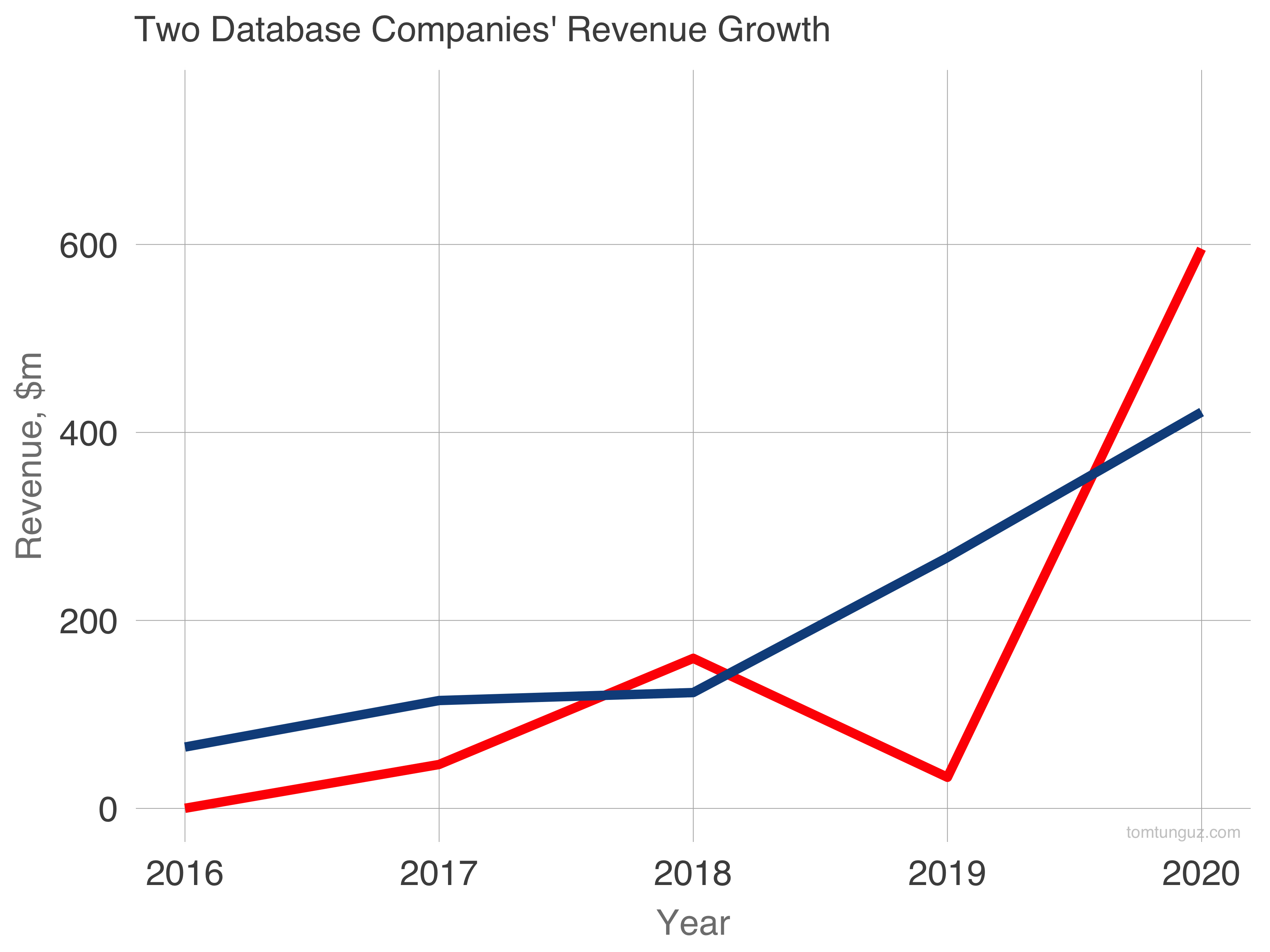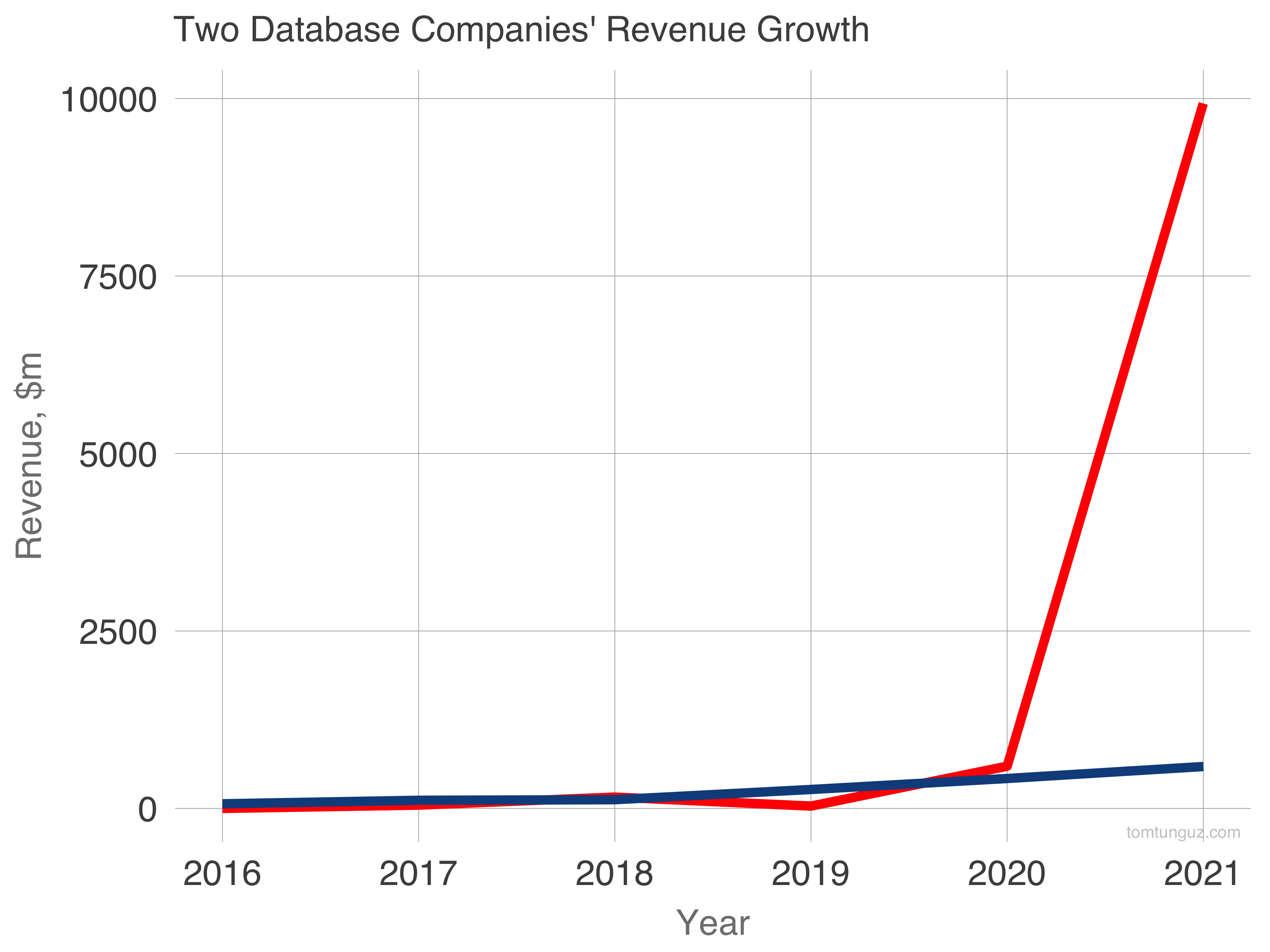I’m going to tell you a bit about two startups and I’d like you to guess the name of each company.
Both of these businesses are publicly traded. Both startups provide database software to developers to build applications. Both have grown very fast. In fact, their revenue trajectories through 2020 are nearly identical. Both companies employ a usage-based pricing model: pay for what you use.

In 2016, each company recorded less than $50m in revenue. In two years, both would near $200m in revenue. They would both exceed $400m in 2020.
Both of these businesses trade at similar valuations as of this writing.
| Red Company | Blue Company | |
|---|---|---|
| Market Cap to Revenue Multiple | 32.6 | 32.2 |
But the stories diverge in 2021.
 Red Company’s revenue explodes from $595m to $9.9b. That’s 16.6x growth, a rate most seed stage companies would struggle to match.
Red Company’s revenue explodes from $595m to $9.9b. That’s 16.6x growth, a rate most seed stage companies would struggle to match.
Who is Red Company and who is Blue Company? Message me on Twitter with your answer. I’ll share the answers on Monday.
Part 2: 2022-03-14
Thanks to the many readers who wrote in to Guess the Startup on Friday. There were a torrent of ideas: Mongo, Twilio, Snowflake, Databricks, Niantic, Klayvio, Microsoft, DataStax, Zoom, and Peloton.

Here’s the early revenue chart again. Blue Company is none other than MongoDB, one of the most successful standalone database companies. Red Company is Ethereum.
To the many people who guessed correctly, congratulations! I’m impressed by your knowledge of the tech landscape.
I had three goals for the Guess the Startup Post.
First, to have a bit of fun on a Friday.
Second, to show that database companies across web2/web3 can trade at similar multiples, which was a surprise to me. After all, MongoDB and Ethereum are vastly different entities for many reasons.
- they trade on separate exchanges
- they offer different ownership instruments: ETH tokens vs MDB equity
- they employ dissimilar go-to-markets: Ethereum has no enterprise sales team but MongoDB certainly does
- their business predictability diverges wildly: Mongo reports bookings, net dollar retention, customers worth more than 100k in contract value. Try finding those metrics for Ethereum.
We’ll have to see how these two companies trade relative to each other in the future, but they’re closer today than I would have expected. Over time, these companies’ multiples may move together. After all, an investor looking to buy the best database investment will have to choose between Ethereum and Mongo (amongst others). So inevitably, investors will compare web2 and web3.
But, there are many questions to answer about the differences between equity and tokens before the valuation multiples across these two categories reach a consensus.
Third, to highlight the revenue growth of web3 vis-a-vis web2, and the value creation possible. At $310b, Ethereum’s market cap is more than 15x Mongo’s market cap.

But about a year ago, the revenues of both businesses were identical (see above). A 16.6x growth rate in a year would be the envy of most seed stage startups. It’s truly unprecedented at the scale of hundreds of millions of revenue.
Both Mongo and Ethereum are phenomenal businesses, each achieving a unique position in their market in different ways.